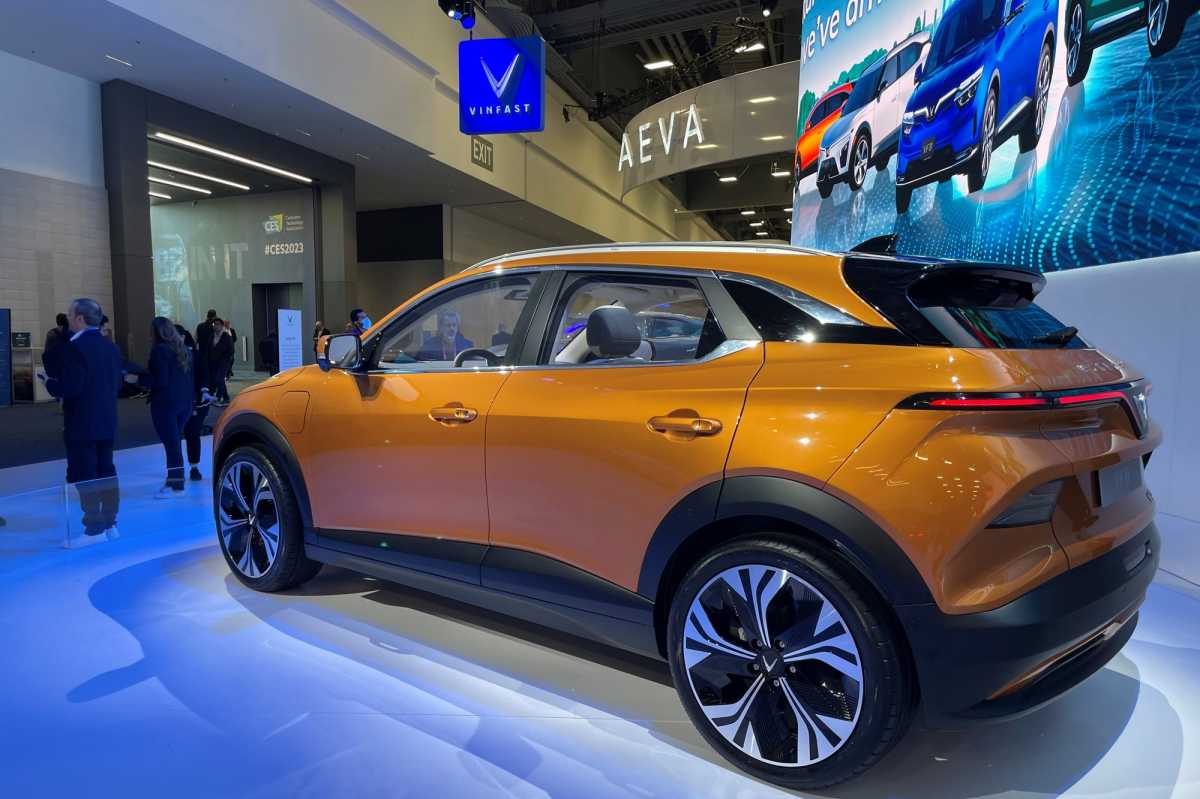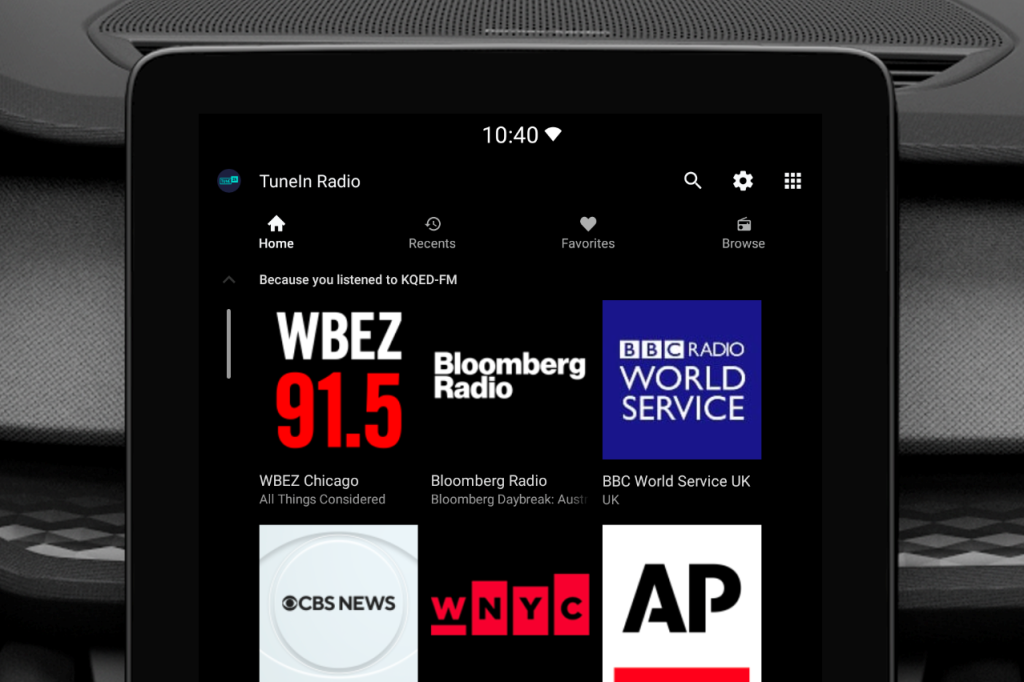TuneIn Radio is in the business of aggregating internet radio stations from around the world, and the company’s chief revenue officer, Rob Deichert, was in an upbeat mood when we met at CES late last week. Deichert was touting new partnerships with EV makers VinFast and Fisker as well as component manufacturers Harman International, Tom-Tom, and Visteon, a Ford spin-off.
TuneIn is already working with a who’s who of other EV builders, including Lucid, Mercedes-Benz, Jaguar-Land Rover, Rivian, Stellantis (parent to Alpha Romeo, Chrysler/Dodge/Jeep/Ram, Fiat, Maserati, and Peugeot), and Tesla.
“The average car on in the U.S. is 12 years old, so there are tens of millions of people contemplating their next vehicle purchase, and thinking seriously about EVs,” said Deichert. “We think the tipping point for EVs—and TuneIn—is just a few years away.”
The large touchscreen displays inside modern EVs (this one is from the VinFast VF 6 compact SUV) are ideal for choosing internet radio stations to listen to while you’re on the road.
Jonathan Takiff/Foundry
Electric vehicles—and only electric vehicles—were everywhere you looked at the huge automotive zone at CES; rides equipped with large, tablet-style infotainment screens that work well with TuneIn’s see-a-bunch, tap-one menus organizing content by favorites, formats, and geographic location.
Internet radio is attractive to EV builders largely because the tuners that pull in terrestrial AM radio stations are highly susceptible to interference from the electric motors powering the cars. The content available on AM radio—talk shows, sports, news, religious, and ethnic/minority programming—is as popular as ever. And EV manufacturers could solve the interference problem using filters, cables with better shielding, and by taking care where to fit various electrical components inside the vehicle, as Xperi Inc. communications system engineer explained in a recent New York Times’ article (Xperi developed the HD Radio platform for AM and FM).
Putting that programming on the internet, however, not only makes the interference issue go away, it opens a world of opportunities for manufacturers to sell subscriptions, including the mobile 5G service needed to bring something like TuneIn to your dashboard.
So, as they did with 8-track, cassette, and CD players, car manufacturers including Audi, BMW, Mercedes Benz, Porsche, Tesla, Volkswagen, and Volvo have all dropped AM radios from their EV’s in-cabin entertainment systems. Ford still offers AM radio in its Mustang Mach-E, but will soon drop it from its F-150 Lightning electric pickup.

Electric Vehicle manufacturers are attracted to internet radio aggregator services such as TuneIn. We checked out this VinFast VF 6 compact SUV at CES.
Jonathan Takiff/Foundry
TuneIn isn’t the only option out there, streaming services like iHeart Radio, Radio Player Live, and Radio.net all offer the means to get old-school local radio into the car. TuneIn also serves audio feeds of Bloomberg, CNBC, CNN, Fox Radio News, and MSNBC, “offered with fewer or no commercials and more news nuggets than you’d see on the TV versions” Deichert said, plus “new additions like ‘Court TV’ and classic episodes of ‘Jeopardy’ that pack three shows into an hour.”
Most of TuneIn’s 70 million (monthly) global listeners go for either the free, ad-supported version or the $9.99 one-time-fee TuneIn Pro, which has fewer commercials. If you’re willing to pay $7.99 a month or $69.99 a year, TuneIn Premium is commercial free; plus, it offers access to a gazillion sporting events: college football and basketball, MLB, Premier League, and the NHL.
As its moves into more cars, TuneIn is clearly hoping to succeed with the kind of subscription model that keeps Sirius/XM satellite radio rocking with 34.2 million customers.
While it’s true that relatively recent-vintage cars with Apple CarPlay and/or Android Auto can also stream services like TuneIn, via your phone and a Bluetooth connection, the frictionless direct-to-car setup I saw in a snazzy VinFast VF 6 compact SUV—bundled with 6 to 12 months of free 5G connectivity from T-Mobile—would surely lure me as a car buyer to explore the next, really big thing in radio listening.
And by the time that freebie deal ran out, I’d be converted.

